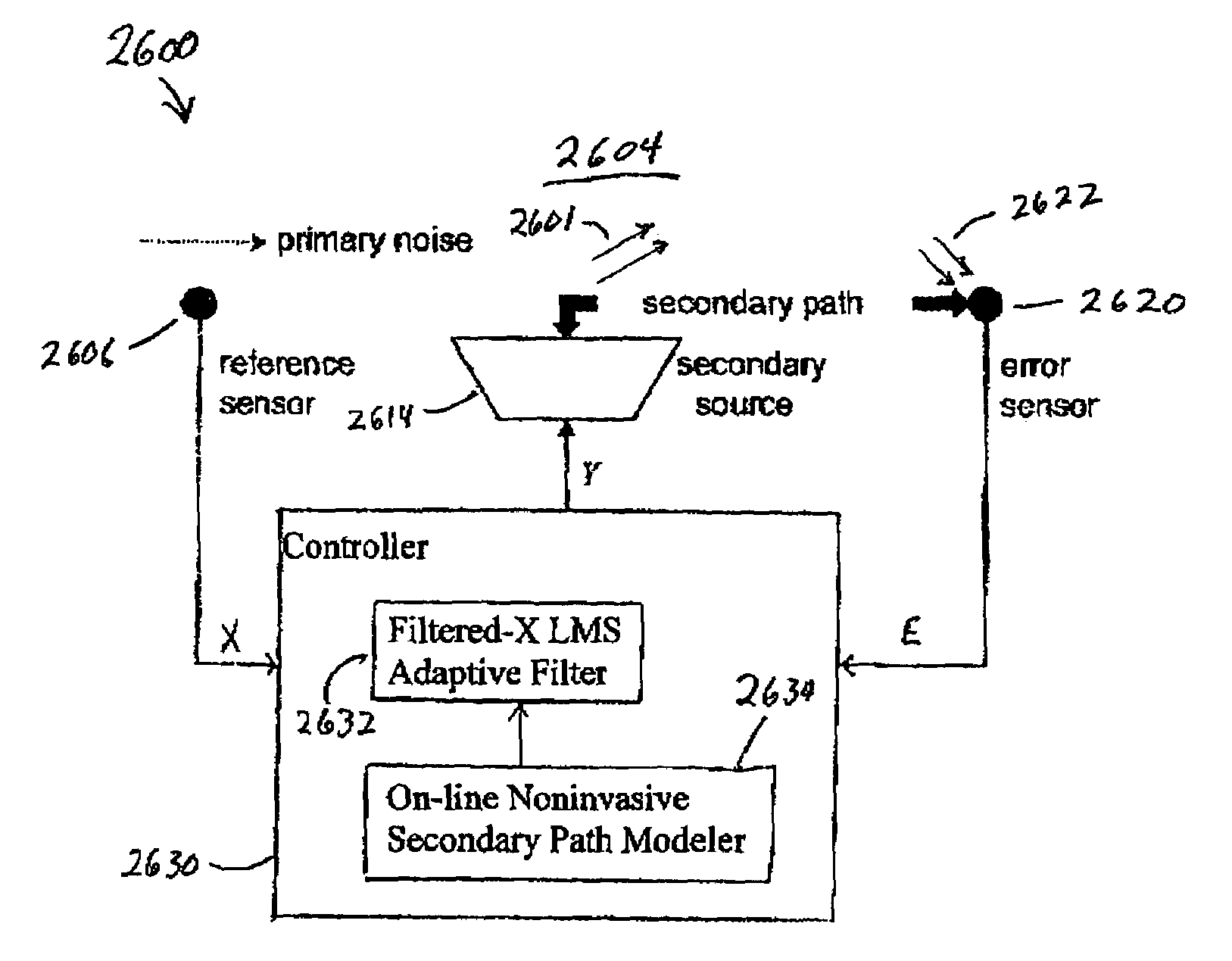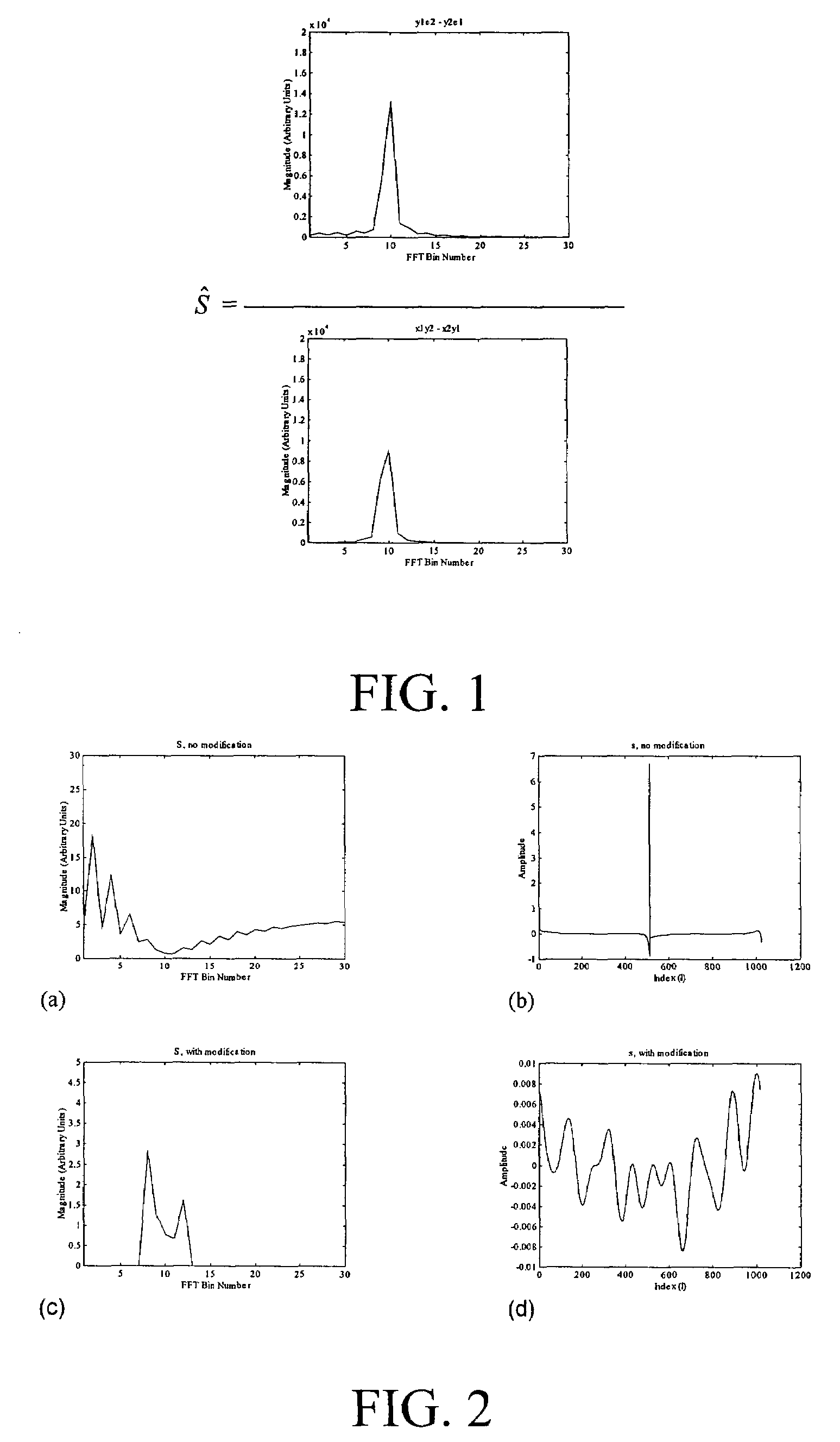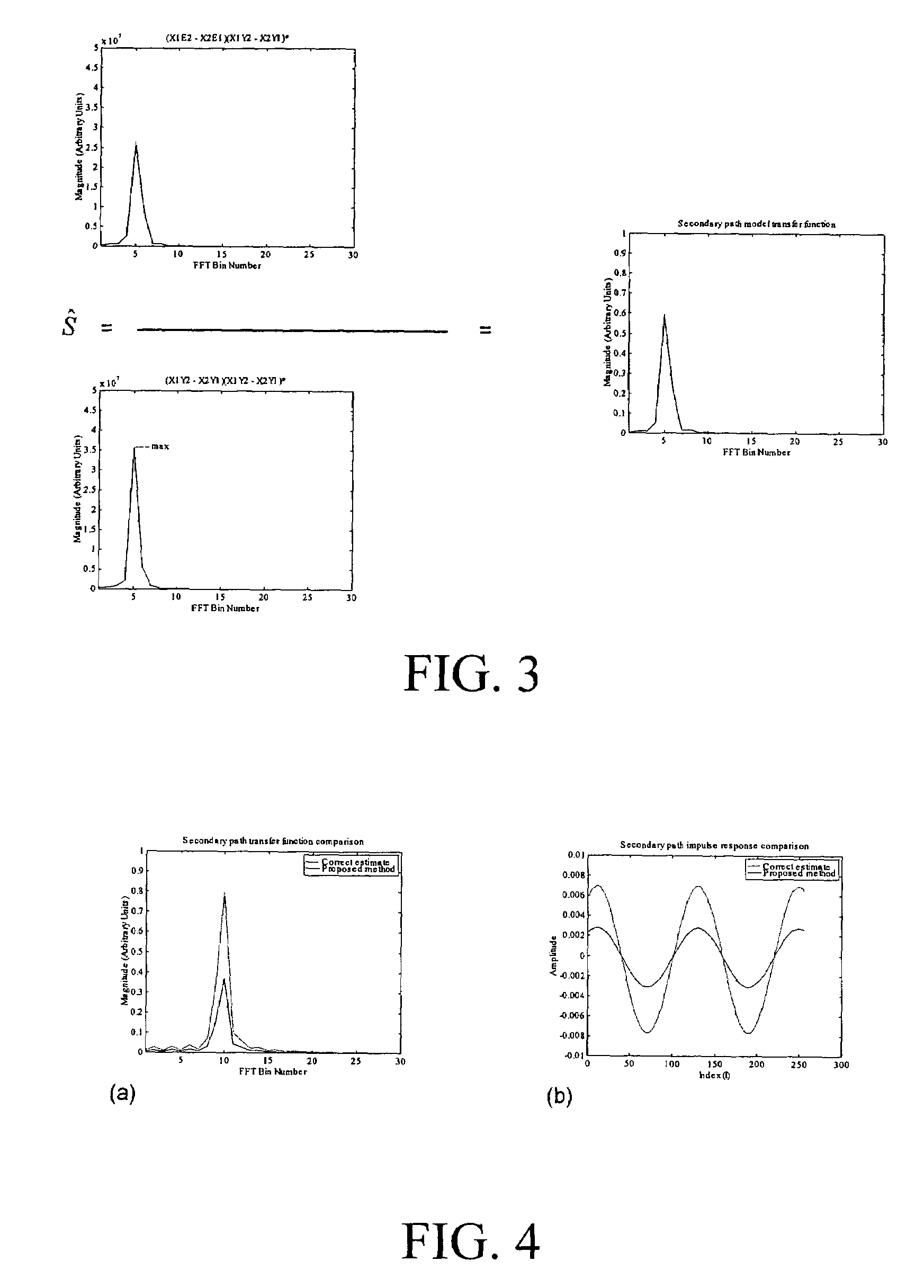Linear independence method for noninvasive on-line system identification/secondary path modeling for filtered-X LMS-based active noise control systems
- Summary
- Abstract
- Description
- Claims
- Application Information
AI Technical Summary
Benefits of technology
Problems solved by technology
Method used
Image
Examples
Embodiment Construction
[0046]The present invention describes a robust on-line and noninvasive secondary path modeling algorithm for periodic signals to work in tandem with the established filtered-X LMS algorithm, which requires a model of the secondary path, for active noise control. The on-line secondary path modeling algorithms of the past have either mandated the injection of random noise (an “invasive” approach) which is generally not desired for active noise control or have been insufficient in providing an accurate enough secondary path model for stability in time-varying systems when utilizing a noninvasive scheme. In this invention, the most well-known noninvasive algorithm, referred to as the overall modeling algorithm, was shown to provide grossly inaccurate secondary path estimates and exhibit seemingly chaotic behavior due to its design, facts that account for its unstable and unpredictable nature experienced by users of this algorithm. The overall algorithm is such that there are an infinite...
PUM
 Login to View More
Login to View More Abstract
Description
Claims
Application Information
 Login to View More
Login to View More - R&D
- Intellectual Property
- Life Sciences
- Materials
- Tech Scout
- Unparalleled Data Quality
- Higher Quality Content
- 60% Fewer Hallucinations
Browse by: Latest US Patents, China's latest patents, Technical Efficacy Thesaurus, Application Domain, Technology Topic, Popular Technical Reports.
© 2025 PatSnap. All rights reserved.Legal|Privacy policy|Modern Slavery Act Transparency Statement|Sitemap|About US| Contact US: help@patsnap.com



